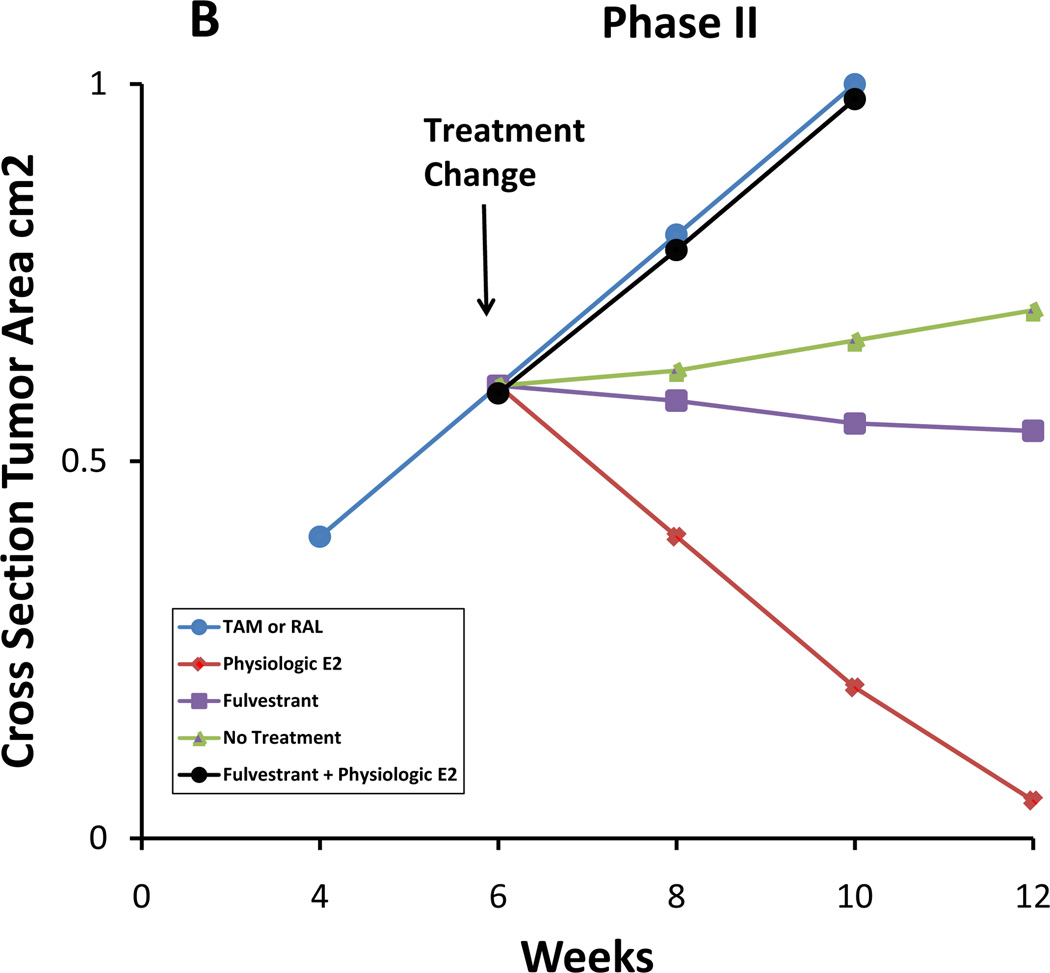Figure 9.
Diagram of the growth rates of MCF-7 tumors during the evolution of drug resistance to selective estrogen receptor modulators (SERMs). A. During Phase I SERM resistance, tumors transplanted into athymic mice grow in response to either a SERM, tamoxifen (Tam) or raloxifene (Ral), or estrogen, but no estrogen (equivalent to the use of an aromatase inhibitor used clinically after Tam resistance occurs) or fulvestrant does not support growth (fulvestrant in used in this indication as a second-line therapy). B. During Phase II SERM resistance, tumors transplanted into athymic mice treated with SERMs now grow with a SERM (Tam or Ral). No treatment (equivalent to an aromatase inhibitor clinically) causes growth to slow, as does administering fulvestrant, but physiologic estradiol (E2) causes dramatic apoptosis and tumor regression. Paradoxically, physiologic E2 plus fulvestrant actually causes tumor growth. The low concentration of fulvestrant cancels out the apoptotic effect of E2 thereby redirecting E2 as a growth signal, but higher concentrations of fulvestrant now have effective antitumor effects. This is now noted clinically [92].


